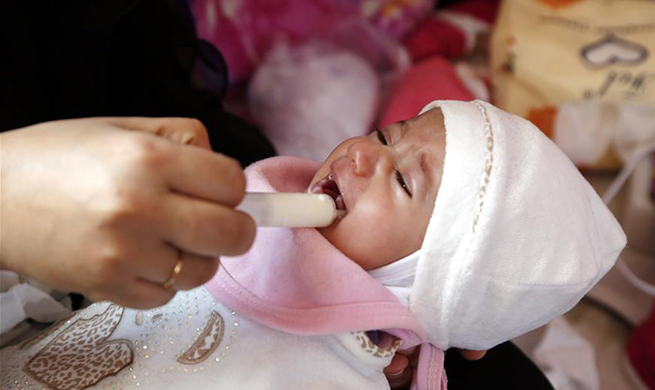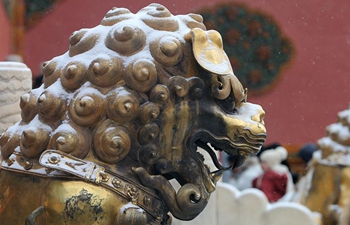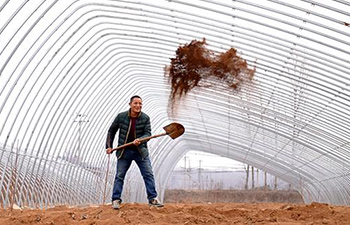by Shristi Kafle
SINDHUPALCHOWK, Nepal, Feb. 20 (Xinhua) -- For 23-year-old Bishal Tamang, who lives in a village some one hour's walk from the Nepal-China border point, working in a furniture factory in Malaysia amid hot temperature with a little income was a tough job.
After the closure of the Tatopani-Khasa (Zhangmu) border point following the devastating earthquake in 2015 and severe destruction of the whole village, school drop-out Tamang left for foreign employment to support his family and livelihood.
But after three years of the disaster, Tamang is back to his own country and has started working as a labor in the Araniko Highway upgradation project, all thanks to the efforts to resume the Tatopani border point, which is likely to take place in May this year.
"I heard that the border point will resume soon, so returned back to my country. Once the border is open, I am hopeful our lives will be normal again," Tamang told Xinhua from the worksite.
According to Tamang, he works every day from 7:00 a.m. to 5:30 p.m., in particular clears the road from falling stones from the hills, and earns eight hundred rupees per day, thus he can support his six-member family.
Not only Tamang, but also dozens of Nepali youths are currently working in the upgradation of the road section from Barhabise to border point which is a major section of China-built Araniko Highway, the oldest and shortest route connecting Nepal's capital with China.
Dipendra Kumar Shrestha, Chairman of Bhotekoshi Rural Municipality Ward-2, where the border point is located, told Xinhua: "Among around 900 households, more than 600 families have been displaced due to the earthquake and other disasters in my ward alone. Many migrated to Kathmandu while local youths moved to the Middle East and Gulf countries for employment."
He shared that the displaced families are getting back gradually with the hope of reviving their businesses and regular lives. People from villages such as Larcha, Tatopnai, Liping, Kodari were solely dependent upon the border point for livelihood by running hotels, shops, and small business, among others.
Local government officials said the Chinese workers are working day and night to bring the border point back to its normalcy, be it road upgradation, construction of a friendship bridge over the Bhotekoshi River locally known as the "Miteri Bridge", or the construction of a modern dry port.
Raj Kumar Poudel, Chairman of Bhotekoshi Rural Municipality, told Xinhua, "Over 90 percent works of the dry port construction has been completed. The road upgradation task and friendship bridge construction is also moving in a rapid manner. Everyone is desperately waiting for the resumption of border after few years of closure."
On Sunday, Minister for Physical Infrastructure and Transport Raghubir Mahaseth inspected the area and directed concerned agencies to start necessary tasks from the Nepali side immediately.
Nepali immigration, customs and quarantine offices are expected to operate from the newly constructed dry port, which has been built by Chinese Railway Construction Company, just a few kilometers away from the border point.
The international standard dry port, which has a capacity of parking around 300 containers, features warehouse, checking yard, bank, parking lot and residential complex among others.
Hundreds of traders under the Trans Himalayan Association are hopeful that the resumption of the border will help in revival of their business, and the country's economy as a whole.
Bhakta Parajuli, Secretary at the association, shared with Xinhua, "The resumption of the Tatopani border point will bring a big change from the local to the central level. It would be a milestone for bilateral trade and the country's prosperity."
Following the closure of the border point since the deadly earthquake, Geelong Port located in Rasuwa district, locally known as Keyrung, is the only operating trade point between Nepal and China.
Traders said that it requires double time and money to import the goods via Keyrung point as containers take longer time to arrive through the Kolkata port in India.
Parajuli said that it would take some 15-20 days for the imported goods to reach Kathmandu through Khasa-Tatopani whereas it takes 2-3 months via Kerung-Rasuwa, while the cost of transportation almost triples for the latter.

















